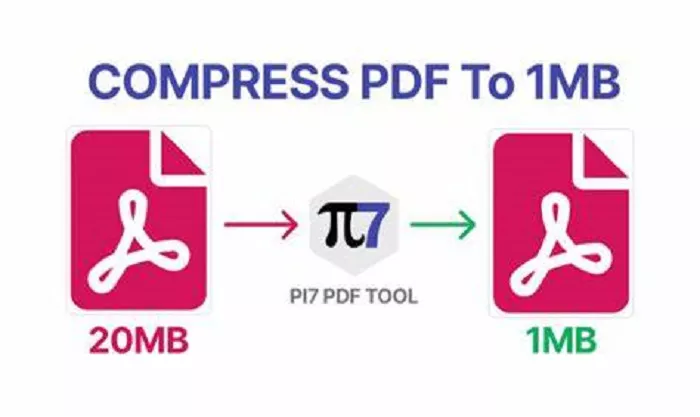PDF (Portable Document Format) files are widely used for sharing documents due to their consistency across different platforms. However, large PDF files can be cumbersome to store, share, or upload. PDF compressors address this issue by reducing file size while maintaining acceptable quality. This article explores the technical mechanisms behind PDF compression, detailing the algorithms, techniques, and trade-offs involved.
Understanding PDF File Structure
Text:Characters and fonts.
Images:Raster (JPEG, PNG) or vector graphics.
Metadata:Document properties, annotations, and bookmarks.
Objects:Structured data like dictionaries, arrays, and streams.
Each component contributes to file size, and compression techniques target these elements differently.
Types of PDF Compression Techniques
Lossless Compression
Flate (ZIP) Compression:A DEFLATE-based algorithm that removes redundancy in text and vector data.
LZW (Lempel-Ziv-Welch):An older algorithm that replaces repeated data with references.
Object Streams & XRef Streams:Combining multiple PDF objects into compressed streams to reduce overhead.
Lossy Compression
Downsampling Images:Reducing resolution (e.g., from 300 DPI to 150 DPI).
JPEG Compression:Adjusting quality levels (e.g., 90% → 70%).
Color Space Reduction:Converting RGB to grayscale or indexed color.
Font Subsetting & Optimization
PDFs with embedded fonts can be large. Compressors may
- Subset Fonts:Include only used characters instead of the entire font.
- Remove Unused Fonts:Delete fonts not referenced in the document.
- Convert Text to Paths:eplacing fonts with vector shapes (rare, increases size in some cases).
Removing Redundant Data
- Cleaning Metadata:Deleting unnecessary document info (author, revision history).
- Merging Duplicate Objects:Reusing identical images or patterns.
- Removing Hidden Layers:Discarding invisible content.
Step-by-Step Compression Process
Analysis Phase
- Scans the PDF to identify components (text, images, fonts).
- Determines which compression methods are suitable.
Text & Vector Compression
- Applies Flate or LZW to compress text streams.
- Optimizes PDF object structure (e.g., merging duplicate objects).
Image Compression
- Detects image types (JPEG, PNG, TIFF).
- Applies downsampling or recompression if lossy is allowed.
- Optimizes embedded thumbnails.
Font Handling
- Removes unused fonts.
- Embeds only necessary glyphs (subsetting).
Final Optimization
- Cleans metadata.
- Rebuilds the PDF structure for efficiency.
Advanced Compression Algorithms
JBIG2 for Bilevel Images
- Used for scanned black-and-white documents.
- Efficiently compresses text and line art.
- Can be lossless or lossy (aggressive modes may introduce artifacts).
JPEG 2000 for Photographic Images
- Offers better compression than standard JPEG.
- Supports lossless and lossy modes.
CCITT Group 4 for Fax-Style Documents
- Optimized for monochrome documents.
- Used in scanned contracts or invoices.
Trade-offs in PDF Compression
| Factor | Lossless Compression | Lossy Compression |
|---|---|---|
| File Size Reduction | Moderate (10-50%) | High (50-90%) |
| Quality Retention | Perfect | Slight to Significant Loss |
| Best For | Legal, Technical Docs | Scans, Presentations |
| Processing Speed | Fast | Slower (due to re-encoding) |
Popular PDF Compression Tools & Their Approaches
Adobe Acrobat Pro
- Uses a mix of lossless (Flate) and lossy (JPEG downsampling).
- Offers presets (e.g., “Press Quality,” “Smallest File Size”).
Smallpdf / iLovePDF
- Cloud-based, prioritizes speed.
- Often applies aggressive lossy compression on images.
Ghostscript (Open Source)
- Command-line tool for advanced users.
- Supports JBIG2, Flate, and custom DPI settings.
PDFtk & PDFium (Developer Tools)
- Allow fine-grained control over compression parameters.
Best Practices for Optimal Compression
Choose the Right Method:Lossless for text, lossy for images.
Batch Processing:Use tools that handle multiple files efficiently.
Test Different Settings:Balance quality vs. size.
OCR Before Compression:For scanned PDFs, OCR first to enable text compression.
Avoid Over-Compression:Excessive downsampling can make text unreadable.
Future Trends in PDF Compression
AI-Based Compression:Machine learning to predict optimal compression settings.
Cloud-Optimized PDFs:Progressive loading for web viewing.
Enhanced JBIG2 & JPEG XL:New algorithms for better compression ratios.
Conclusion
PDF compression is a multi-stage process involving lossless and lossy techniques tailored to different document components. Understanding these mechanisms allows professionals to choose the right tools and settings for their needs. As technology evolves, AI and improved algorithms will further enhance PDF compression efficiency.
By applying the principles discussed, users can significantly reduce PDF file sizes while maintaining an acceptable balance between quality and performance.

